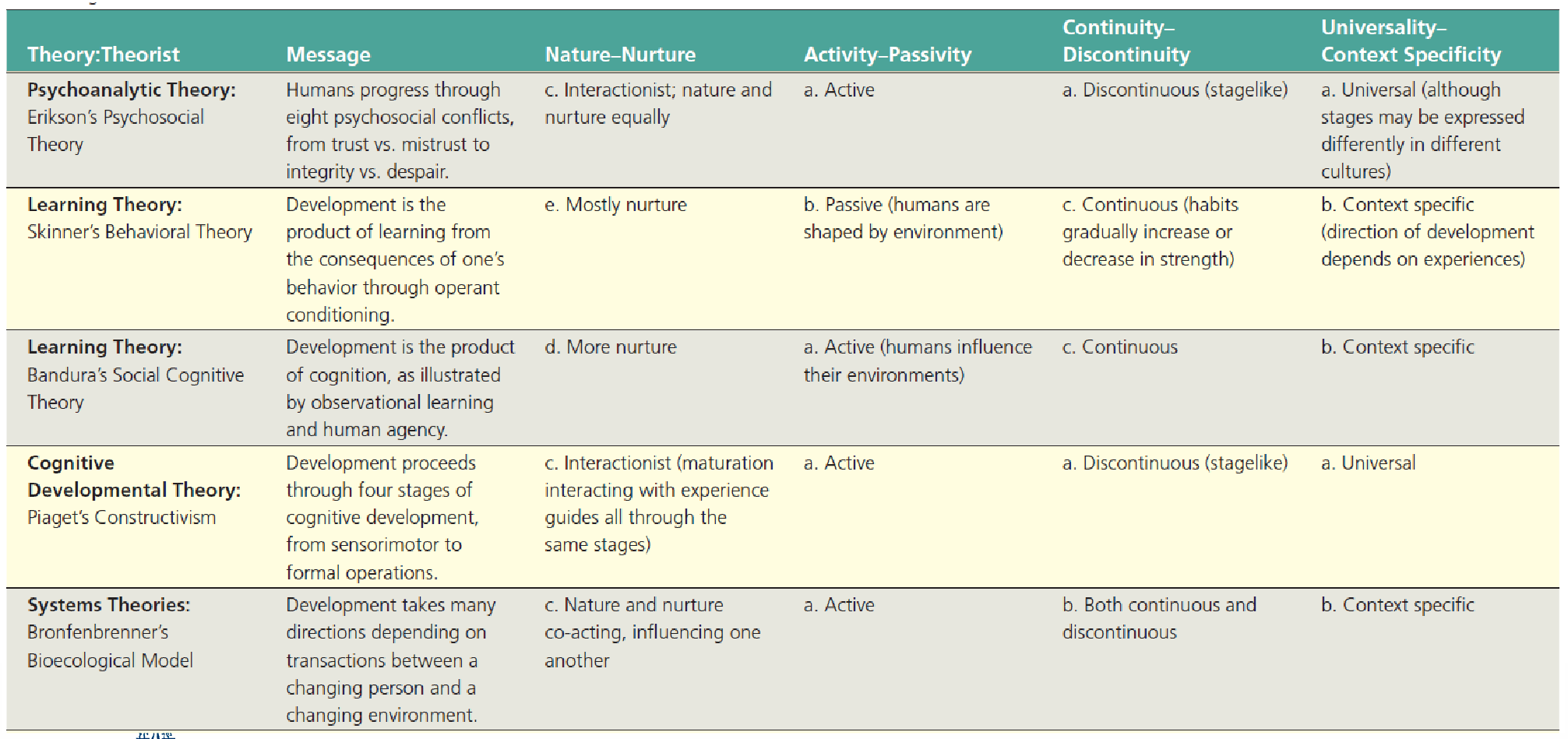Lecture 2 - Developmental Theories
1/37
There's no tags or description
Looks like no tags are added yet.
Name | Mastery | Learn | Test | Matching | Spaced |
|---|
No study sessions yet.
38 Terms
What does the Nature—Nurture discussion in DP entail?
Is development primary the product of genes, biology and maturation — or of experience, learning, and social influences?
What does the Activity—Passivity discussion in DP entail?
Do humans actively shape their own environments and contribute to their own development — or are they passively shaped by forces beyond their control?
What does the Continuity—Discontinuity discussion in DP entail?
Do humans change gradually and in quantitative ways — or do they progress through qualitatively different stages and develop very different competencies and characteristics?
What does the Universality—Context specificity discussion in DP entail?
Is development similar from person to person and from culture to culture — or do pathways of development vary considerably depending on the social context?
What is Nature vs. Nurture?
Nature = The way you were born.
Nurture = The way you were raised.
What is the answer to the Nature vs. Nurture debate?
There are nature—nurture interactions:
Gene-environment interactions
Gene-environment correlations
Epigenetics
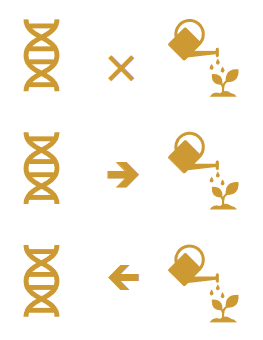
What does the Gene-environment interaction entail?
People with different genes are affected differently by environmental influences.
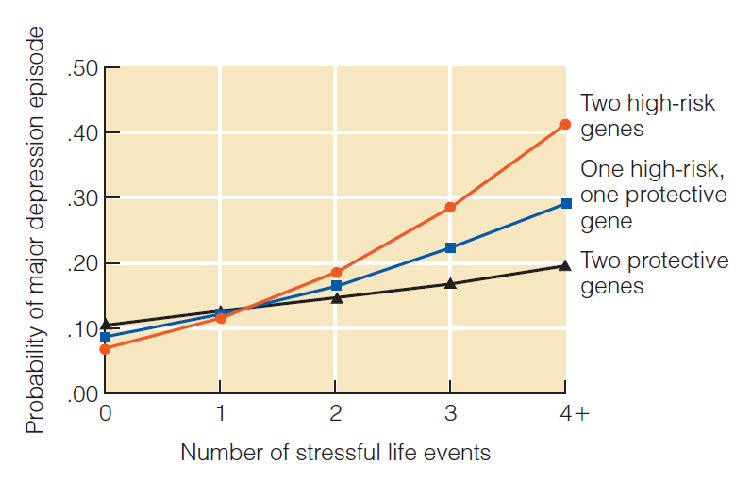
What are the 3 types of Gene-environment correlations?
Passive genotype-environment fit
Association between the inherited genotype of a child and environment in which the child is raised.
Evocative genotype-environment fit
Associations between genetically programmed behaviors and others’ reactions to that behavior (inborn characteristics evoke certain responses from environment).
Active genotype-environment fit
Association between an individual’s genetic tendencies and the environmental niches that they actively selects.
These types of genotype-environment fit changes across the lifespan.
What is an example of passive genotype-environment fit?
Association between the inherited genotype of a child and environment in which the child is raised.
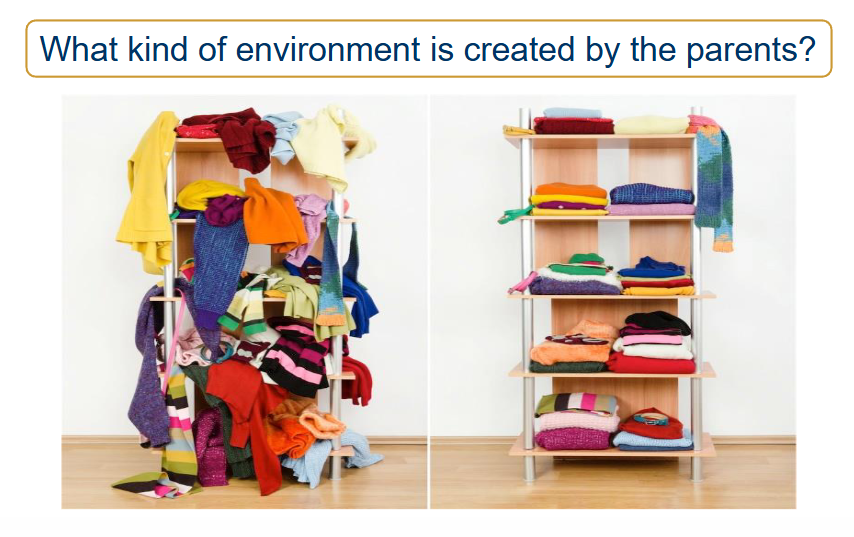
What is an example of evocative genotype-environment fit?
Associations between genetically programmed behaviors and others’ reactions to that behavior (inborn characteristics evoke certain responses from environment).
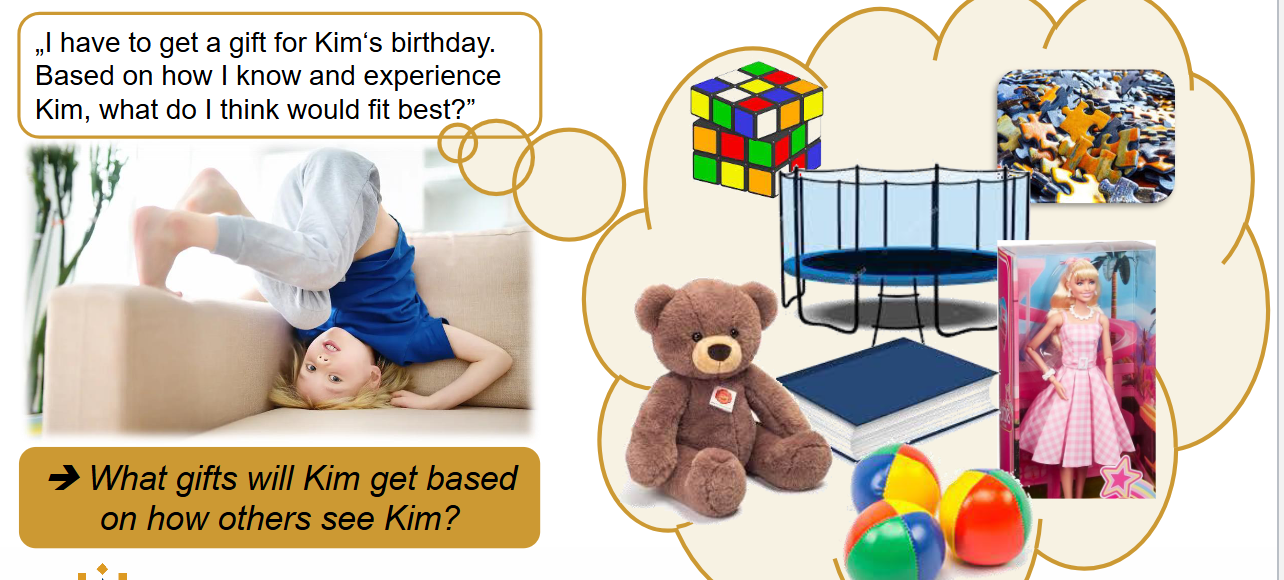
What is an example of active genotype-environment fit?
Association between an individual’s genetic tendencies and the environmental niches that they actively selects.
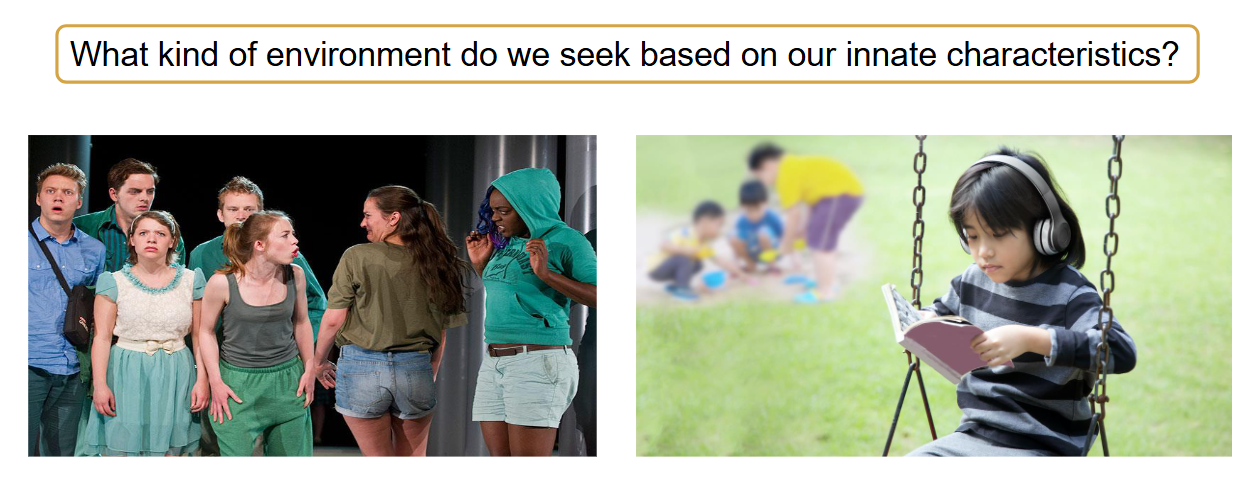
What is Epigenetics?
Environment-sensitive genes: Gene expression can be changed by environmental influences across the lifespan.
Ex. Physical activity counteracts genetic risk for memory decline in old age.

What question arises in the Activity vs. Passivity debate?
Does the developing person have an active or passive role in their development?

What does Continuity vs. Discontinuity entail?
How does development take place:
In a continuous way: do individuals become quantitatively more/better/faster.
In a discontinuous way: do individuals develop qualitatively different abilities at different times (at distinct stages).

What question arises from Universality vs. Context-specificity?
How universal or context-specific is development? What is the role of culture, social contexts, … for development?

What does Erikson’s Psychosocial Development Theory entail?
Personality develops throughout the lifespan and is influenced by culture, society and history.
Development of personality can be divided into 8 stages.
At each stage, the individual must cope with a crisis/conflict in either an adaptive or maladaptive manner.
If one stage was dealt with in a maladaptive manner, the following stages could not be adequately attended, resulting in a maladapted individual.
Successful solution of the conflict leads to “virtues”.
What are the 8 Stages of Erikson’s Psychosocial development theory?
Trust vs. Mistrust
Age: birth — 1 year.
Central issue: Can I trust others?
Virtue or Strength: Hope
Autonomy vs. Shame and doubt
Age: 1 — 3 years.
Central issue: Can I act on my own?
Virtue or Strength: Will
Initiative vs. Guilt
Age: 3 — 6 years.
Central issue: Can I carry out my plans successfully?
Virtue or Strength: Purpose
Industry vs. Inferiority
Age: 6 — 12 years.
Central issue: Am I competent compared with others?
Virtue or Strength: Competence
Identity vs. Role confusion
Age: 12 — 20 years.
Central issue: Who am I and where am I going?
Virtue or Strength: Fidelity
Intimacy vs. Isolation
Age: 20 — 40 years
Central issue: Am I ready for a committed relationship?
Virtue or Strength: Love
Generativity vs. Stagnation
Age: 40 — 65 years
Central issue: Have I given something to future generations?
Virtue or Strength: Care
Integrity vs. Despair
Age: 65 years and older
Central issue: Has my life been meaningful?
Virtue or Strength: Wisdom

What are the 2 learning theories in Traditional behaviorism?
Watson: Classical conditioning
Development = learning associations.
Infants learn to love their parents: associated with positive sensations of drinking milk, being rocked, and being comforted.
“Give me a dozen healthy infants and I’ll guarantee to take any one at random and train him to be a doctor, lawyer, artist, or thief.”
Skinner: Operant conditioning
Development = individual’s learning experiences.
Behavior becomes more or less probable depending on consequences: adding or removing positive or negative stimulus.
Reinforcement (incl. removing neg. stimulus) strengthens behavior.
Punishment (inc. removing pos. stimulus) weakens behavior.
What is the learning theory of Cognitive behaviorism?
Social-cognitive learning theory of Bandura (1970s).
Humans learn through observational learning → Modeling (watching and imitating what others do).
Role of cognition: anticipation of consequences likely to follow behavior.
Learners pay attention, construct and remember mental representations of what they saw, retrieve these representations from memory later, and use them to guide behavior → active, cognitive role of learner.
What is the active, cognitive role of learner in the Social-cognitive learning theory of Bandura?
Learners pay attention, construct and remember mental representations of what they saw, retrieve these representations from memory later, and use them to guide behavior.
Summary of the 3 Major learning theories
Classical conditioning (Watson)
Operant conditioning (Skinner)
Observational learning (Bandura)

What does the Ecological model of Bronfenbrenner entail?
There are 5 environmental systems in which a child is surrounded by:
Microsystem (direct surrounding of child; ex. parents, peers, school).
Mesosystem (the interaction between microsystem and macrosystem).
Exosystem (indirect influence on the child; ex. job of parents, social welfare services).
Macrosystem (attitudes and ideologies of the culture).
Chronosystem (sociohistorical conditions and time since life events).
Development reflects influence of systems:
Complex: contextual effects at any level

What are the 3 contributions that the Ecological model of Bronfenbrenner brings? What is 1 critic?
Contributions:
Systematic examination of micro and macro dimensions of environmental systems.
Attention to connections between environmental systems.
Emphasis on other social contexts than family.
Critic:
Influence of biological and cognitive factors underestimated → Addition of biological influences in later versions of model.
Where are the theories specific to different periods of the lifespan placed?
Childhood
Cognitive development (Piaget)
Socio-cultural theory of Vygotsky
Middle age
Social clock model
Older age
Selection, optimization, and compensation
Socio-emotional selectivity
How does cognition develop according to Piaget?
In universally fixed order of phases → Discontinuous development.
Each phase is qualitatively different.
Child actively contributes to own knowledge formation (‘little scientist’).
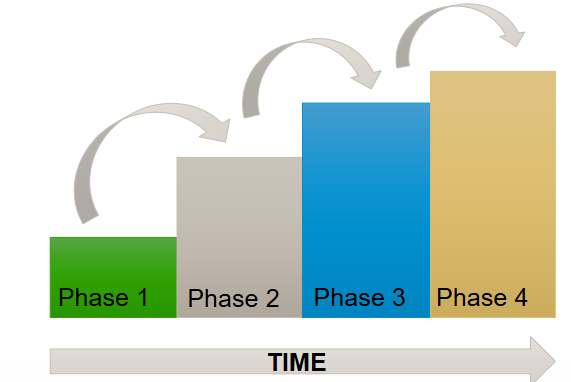
What are the 4 Developmental phases according to Piaget?
Sensorimotor (0-2 years)
Sensory and motor skills
Pre-operational (2-7 years)
Language and mental representation
Egocentrism
Concrete operational (7-12 years)
Logical reasoning and categorising
Conservation of number and mass
Formal operational (from 12 years)
Scientific reasoning and hypothesis testing

Summary on Piaget’s theory
What is the Heritage of Piaget?
Impact on education:
School age (6-7 years): start concrete operational phase: learning to read, write, and calculate.
Start high school (12-13 years): start formal operational phase: scientific reasoning.
Boosted research on cognitive development.
What does the Socio-cultural theory of Vygotsky entail?
He was an educator inspired by socialism.
Children (actively) develop intellectually by interacting with their sociocultural environment.
Developing is a shared process (of the one who learns and the environment).
People around us (“more knowledgeable other”) enable our cognitive growth: adults make children mentally advance.
What is the Zone of proximal development?
The gap between the child’s ability to solve a problem on its own and the potential development that he can make with the help of someone else.
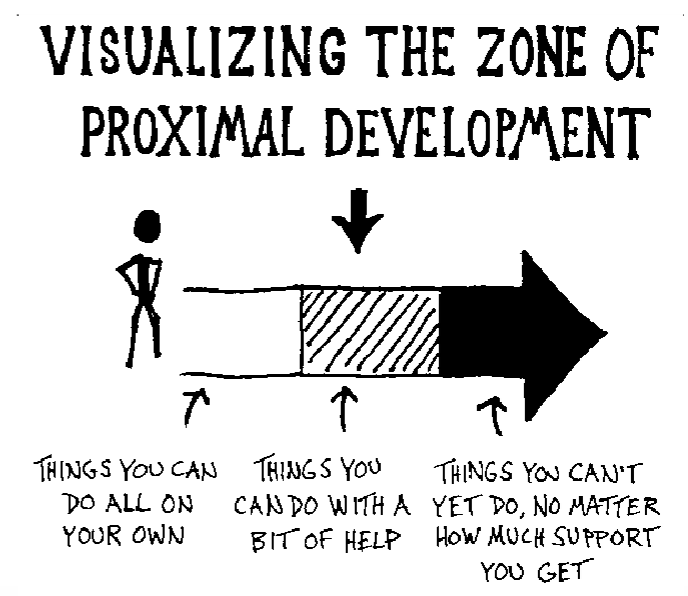
What is Scaffolding?
The degree of support adapted to child’s level of ability and degree of support is reduced gradually (until the child can do it on his own).
What is Vygotsky’s vision on Language?
Language use by parents stimulates cognitive development.
Children learn via ‘inner speech’: words migrate inward.
What are developmental tasks as social expectations regarding Adult age?
Adult age is less determined by biological and external regulation processes compared to childhood.
Adults have more freedom to create their development and to adjust it (job selection, partner choice, form of living, place to live, leisure activities, etc.
Social norms and expectations can set the frame for these decisions.
What does the Social clock model of Neugarten entail?
Shared societal expectations in which tasks should be fulfilled in which age.
These expectations create a normative time schedule for the life course.
Persons compare themselves with others and the normative time schedule (on time vs. off time).
Violations of normative time schedule = social disapproval.
Fit with normative time schedule = social support.
Normative time schedule leads life planning and personal goal setting.

Aging is accompanied by age-related losses and impairments — What do the theories in this field focus on?
Theories focus on psychological and behavioral processes in adapting to and maintaining performance on functional tasks.
What does the Selection-Optimization-Compensation (SOC) Model entail?
Psychological and behavioral processes in adapting to age-related losses and disabilities, and maintaining performance on functional tasks.
Successful aging = SOC
Selection
Optimization
Compensation
all three: Adaptation
→ Maximize gains, minimize losses, growth / maintenance of function, regulation of loss.
What does the Socioemotional selectivity theory of Carstensen entail?
The approach of endings, due to aging or other (e.g. geographic relocations, severe illness) elicits motivational changes:
Emotionally meaningful goals are prioritized over exploration.
Effects on preferences, social networks, and emotional experience.
Positivity effect in cognitive processing of older adults:
Pay more attention to, better remember, and place more priority on positive than on negative information.

Summary of the theories discussed
